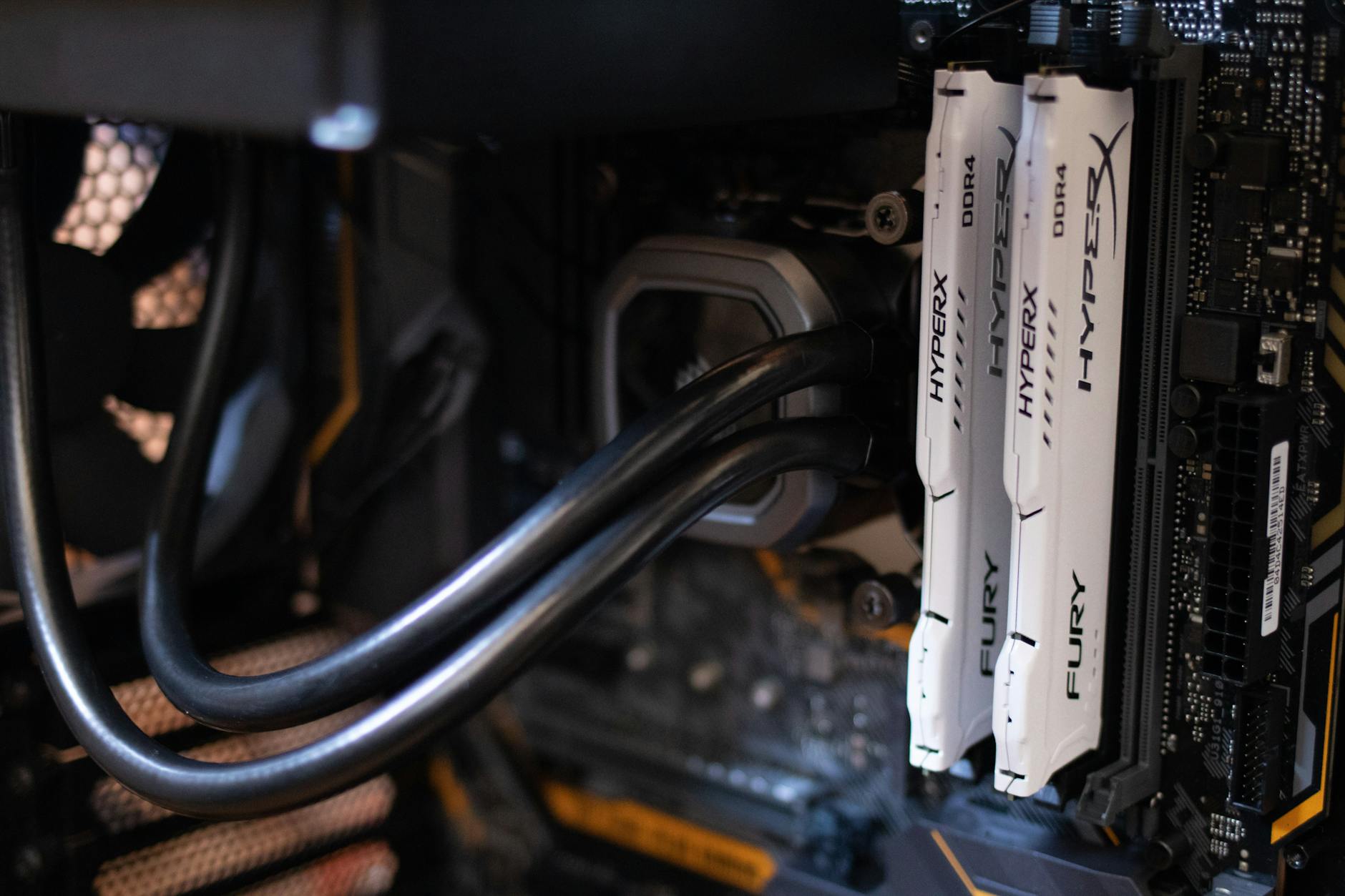Selecting the right web server for your project is a critical decision that can significantly impact the performance, security, and maintainability of your website or application. With so many web server options available, it can be challenging to know which one is best suited for your specific needs. In this comprehensive guide, we will explore some of the most popular web servers, such as Nginx, Apache, and LiteSpeed, as well as their advantages and drawbacks. By the end of this article, you should have a better understanding of which web server is the best choice for your project.
Understanding Web Servers and Their Role in Your Project
A web server is a software application that processes and delivers web pages and other content to users’ web browsers or clients over the internet. Web servers play a crucial role in hosting websites, web applications, and APIs, as they handle incoming requests and send back the appropriate responses.
When choosing a web server, you should consider factors such as performance, scalability, ease of use, and compatibility with your project’s technology stack. By selecting the right web server, you can optimize your project’s performance, improve its security, and ensure a seamless user experience.
Nginx Web Server: A High-Performance Option for Modern Projects
Nginx is a popular web server known for its high performance, stability, and low resource consumption.
Initially released in 2004, Nginx was designed to address the C10k problem, a challenge related to handling a large number of simultaneous connections. Over the years, Nginx has become a go-to choice for many developers and system administrators due to its robust feature set and ability to serve a high volume of traffic with minimal hardware resources.
Installing Nginx on Linux
To install Nginx on Linux, you can use the package manager for your specific distribution. For example, on Ubuntu or Debian-based systems, you can run the following commands in the terminal:
sudo apt updatesudo apt install nginxFor CentOS or RHEL-based systems, the installation commands are:
sudo yum updatesudo yum install epel-releasesudo yum install nginxOnce Nginx is installed, you can start and enable the service using the appropriate commands for your distribution, such as:
sudo systemctl start nginxsudo systemctl enable nginxNginx Performance and Use Cases
Nginx shines when it comes to serving static content and handling a large number of concurrent connections. Its event-driven architecture allows it to efficiently manage resources and avoid bottlenecks. This makes Nginx an excellent choice for high-traffic websites and web applications.
In addition to being a powerful web server, Nginx can also act as a reverse proxy, load balancer, and cache server, providing additional flexibility and performance optimization options.
Apache Web Server: A Versatile and Time-Tested Solution
Apache is the most widely used web server globally, with a market share of over 30% according to W3Techs. Launched in 1995, Apache has a long history and a vast community of users and developers, which translates into extensive documentation, tutorials, and third-party modules.
Installing Apache on Linux
Similar to Nginx, you can install Apache using the package manager for your Linux distribution. For Ubuntu or Debian-based systems, run the following commands:
sudo apt updatesudo apt install apache2For CentOS or RHEL-based systems, use these commands:
sudo yum updatesudo yum install httpdAfter installing Apache, start and enable the service with the appropriate commands, such as:
sudo systemctl start apache2
sudo systemctl enable apache2Apache Performance and Use Cases
Apache uses a process-driven architecture, which can be less efficient than Nginx’s event-driven approach, especially when dealing with a high volume of traffic. However, Apache’s modular design and its .htaccess file support make it highly configurable and adaptable to various use cases.
Apache is an excellent choice for projects that require complex configurations, custom modules, or compatibility with specific technologies. Moreover, Apache’s widespread adoption ensures that it remains a reliable and well-supported option for hosting websites and web applications.
LiteSpeed Web Server: A High-Performance, Drop-in Replacement for Apache
LiteSpeed is a high-performance web server designed as a drop-in replacement for Apache. It offers compatibility with Apache’s configuration files and modules while providing significant performance improvements and reduced resource usage.
Installing LiteSpeed on Linux
Installing LiteSpeed on Linux involves downloading the LiteSpeed package from their website and following the installation instructions. The process varies depending on the distribution you are using, but generally, you can follow these steps:
- Visit the LiteSpeed download page and download the appropriate package for your Linux distribution.
- Extract the downloaded archive using the command
tar -xvf LiteSpeed-VERSION.tar.gz, replacingVERSIONwith the actual version number. - Navigate to the extracted directory using
cd LiteSpeed-VERSION. - Run the installation script with
sudo ./install.shand follow the on-screen instructions.
After installation, you can start LiteSpeed using the provided control script:
sudo /usr/local/lsws/bin/lswsctrl startLiteSpeed Performance and Use Cases
This web server offers several performance advantages over Apache, such as better handling of concurrent connections, faster processing of dynamic content, and built-in support for HTTP/2 and QUIC protocols. LiteSpeed is an excellent choice for projects that require Apache compatibility but need better performance and resource efficiency.
Moreover, LiteSpeed’s LSCache module provides an integrated caching solution for popular content management systems like WordPress, making it an attractive option for hosting such applications.
Comparing Web Servers: Which One Is Best for Your Project?
When choosing a web server, it’s essential to consider your project’s specific needs and requirements. Here’s a brief comparison of the web servers we’ve discussed:
- Nginx: Best suited for high-traffic websites and web applications, as well as projects that require a reverse proxy, load balancer, or cache server. Nginx’s event-driven architecture makes it highly efficient in handling concurrent connections and serving static content.
- Apache: A versatile and time-tested solution, Apache is ideal for projects that require complex configurations, custom modules, or compatibility with specific technologies. Its extensive community support and modular design make it a reliable choice for a wide range of projects.
- LiteSpeed: A high-performance drop-in replacement for Apache, LiteSpeed is perfect for projects that need Apache compatibility with improved performance and resource efficiency. It’s integrated caching solution makes it an attractive option for hosting content management systems like WordPress.
While these three web servers are the most popular choices, there are other options available, such as Caddy, Lighttpd, and Microsoft IIS. It’s crucial to research each web server’s features, performance, and compatibility with your technology stack before making a decision.
Hosting WordPress: Which Web Server Is the Best Choice?
WordPress is the world’s most popular content management system, powering over 40% of websites on the internet. Given its widespread use, selecting the right web server for hosting a WordPress site is a common concern for developers and site owners.
- Nginx: Due to its excellent performance in handling high-traffic loads, Nginx is a great choice for hosting large WordPress sites with numerous visitors. Additionally, Nginx’s ability to act as a reverse proxy and cache server can further optimize your WordPress site’s performance.
- Apache: If your WordPress site requires complex configurations or relies on specific Apache modules, Apache is the way to go. Its compatibility with various technologies and extensive community support makes it a reliable choice for hosting WordPress.
- LiteSpeed: With its integrated LSCache module, LiteSpeed offers an out-of-the-box caching solution for WordPress sites, which can significantly improve page load times and overall performance. If you want an Apache-compatible web server with better performance and caching features, LiteSpeed is an excellent choice.
Ultimately, the best web server for hosting a WordPress site depends on your project’s specific requirements, such as traffic levels, configuration needs, and desired performance optimizations.
Final Thoughts: Choosing the Best Web Server for Your Project
Selecting the right web server for your project is a crucial decision that can impact your website or application’s performance, security, and maintainability. While Nginx, Apache, and LiteSpeed are among the most popular web servers available on Linux, it’s essential to evaluate each option based on your project’s unique needs and requirements.
- If your project demands excellent performance, high scalability, and efficient resource usage, Nginx is likely your best choice.
- For complex configurations, custom module support, and compatibility with various technologies, Apache is a time-tested and versatile option.
- If you need a high-performance Apache alternative with integrated caching capabilities, LiteSpeed is an attractive choice.
By carefully considering the advantages and drawbacks of each web server, you can make an informed decision that optimizes your project’s performance and ensures a seamless user experience. Remember to research the features, performance metrics, and compatibility of each web server before making your final choice. With the right web server in place, you can build a robust and efficient website or web application that meets the demands of your users and serves as a solid foundation for future growth.






